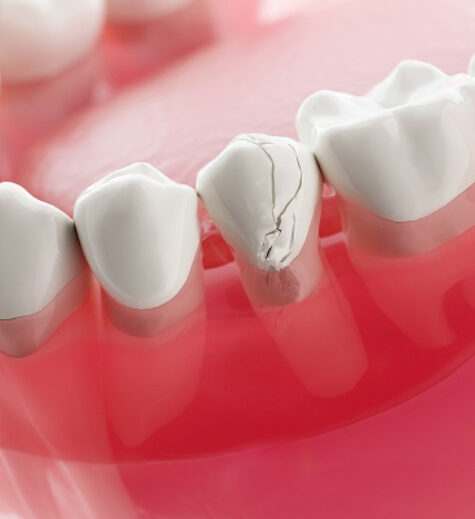Cracked Tooth
Cracking a tooth may be easier than you think.
It can happen from chewing on hard objects or foods like ice, nuts or hard candy. Accidents can cause a cracked tooth, especially those involving a blow to the mouth. Tooth-grinding or clenching or having uneven chewing pressure can lead to a cracked tooth. Tooth structure wears down over time and large fillings or other restorations can result in a crack. Finally, you can crack a tooth by exposing tooth enamel to extreme hot and cold, such as when you eat hot food followed by drinking ice water.
Why are cracked teeth painful? The pressure of biting causes the crack in a tooth to open, which can cause pain. And even if it’s too small to see, the crack can open and irritate the pulp inside.
Treating a cracked tooth depends on the size and location of the crack and the symptoms you are experiencing.
What Your Dentist Will Do
There are several types of tooth fractures and breaks, each of which requires different treatments. These include:
Perhaps most importantly, regular dental check-ups enable your dentist to diagnose and treat problems in the early stages. A cracked tooth can become a bigger problem if left untreated. If you think you may have a cracked tooth, visit your dentist.

Contact
- B-105, Tirth jyoti plaza, opp RTO gate, near subhash bridge circle, Ahmedabad, Gujarat 380027
- +91 96864 58860
- info@theauradent.com
